Customer segmentation has become a fundamental task for businesses. Not only is it crucial for understanding customers in depth, but it is also essential for identifying our market segments, optimising the customer experience and creating personalised content. However, defining a customer segment can be complex, especially for newer companies or those unfamiliar with working with data. Find out how to define a customer segment in 6 steps.

Customer segmentation has become one of the most important tasks in marketing, commercial and sales. Nowadays, it is difficult to find a company that is not applying customer segmentation, as it is one of the bases of the customer-centric perspective and digital marketing oriented towards the personalisation of content, campaigns and customer experiences.
As we explained in the article "Customer Segmentation: How To Segment Customers?", customer segmentation is at the heart of understanding our consumers. Increasingly, companies are striving to know their customers better to offer them exactly what they want and need, both in the supply of products and services, as well as in any other of the spheres that relate customers with a company.
Nowadays, customer segmentation is not an innovation, it is a necessity; especially in the age of email marketing, marketing intelligence, data-driven marketing and personalised customer experiences.
The success of other important business strategies such as the definition of the commercial offer, the creation of a multichannel customer experience or the construction of the customer journey, to name but a few, depends on customer segmentation. This is why it is so important to segment well and to properly define our customer segments.
Would you like to learn more about customer segmentation? Download our guide "Kale Tips: How to segment customers", and learn how to carry out more efficient segmentations.
If we define our market segments poorly, it is very likely that business performance will be severely affected.
So here's how to define customer segments.
How to define your customer segments in business in 6 steps?
1. Think about your value proposition
Before we start classifying our customers, we must be clear about our value proposition and what differentiates us from the competition. All brands have something that makes them unique, whether it is a specific quality of the product or service they offer, a great customer experience, differentiated customer service, etc.
It is vital to understand what makes us unique in order to understand what kind of customers will appreciate our added value. Being clear about our value proposition and the type of customer who will appreciate it is the first step in identifying our customer segments.
2. Identify your existing customers and divide them into groups
The easiest way to define customer segments is to gather information about them. If we have all or most of our existing and/or potential customers identified and we have a solid information base that can help us explain who they are, what they do, what their interests are, what they need and what problems they have; it will be very easy to find similarities and dissimilarities between them so that we can classify them in groups. Collecting data about our customers is crucial to be able to start creating customer intelligence strategies that, in the short or long run, will translate into more satisfied customers.
Customer data is the basis of customer segmentation, as well as any customer-centric initiative.
3. Analyse customer data
Once we have quality data about our existing or potential customers —including leads, audience, etc.— we need to analyse it to make it easier to find common aspects among our customers and to be able to classify them according to the variables that matter to us. There are many types of segmentations and ways to classify customers. Each company should prioritise the variables and metrics that make the most sense according to their business logic.
Data analysis is the best way to exploit the potential of the data we already have, usually stored in databases, in a Customer Data Platform (CDP) or in a CRM system.
Analysing organic data can also lead us to find insights about our customers that we were unaware of and help us to further define what we want to base our segmentation on, what parameters we will apply and what similarities and dissimilarities we prioritise when defining our customer segments.
4 Market research
In addition to collecting and analysing customer data, we should not forget qualitative techniques. Conducting a market research will help us understand where we stand in the market, what niches exist in our market and who our competitors' customers are.
Talking directly to our customers through in-depth interviews, focus groups or even surveys can be extremely useful to complete the portrait we are drawing of our customers with qualitative information that not only humanises them, but is just as important as quantitative data. With this information we can enrich the data analysis we have already done.
5. Take a look at your competitors' segments
Examining the customer segments of our direct and indirect competitors can also help us identify and define our segments. It is very likely that we have segments in common with our direct competitors and knowing this in advance is vital to enhance differentiation and improve our value proposition.
6. Create your buyer persona
The buyer persona method is a much more qualitative customer segmentation model than other segmentation methods. By applying this method, we will achieve complete profiles of our customer types that represent one of the segments we have defined, practically creating a customer profile that has its own personality.
In this sense, once we have identified and defined our customer segments, by creating our buyer personas we will achieve a much more holistic view of our segments, focusing on aspects that are difficult for data to reflect, such as dreams, aspirations, fears or concerns.
A never-ending process
The definition of customer segments should not be a finite process. On the contrary, customer segmentation is a never-ending process. Segmenting customers helps us to know them better, as well as gathering information we did not have before. In this sense, carrying out a customer segmentation usually leads to further future research to complete our customer segments and better define them.
Customer segmentation must have a beginning, but not an end.
Conclusion
Whether or not we have enough data on our customers, segmenting them is a key exercise that any company can carry out. In this article we have listed 8 keys to defining customer segments both for companies that are used to working with data and for companies in the expansion phase that do not yet have sufficient data or are simply not used to processing it.
Either way, any type of company can carry out customer segmentation and discover, in a short time, the great advantages of this process.




